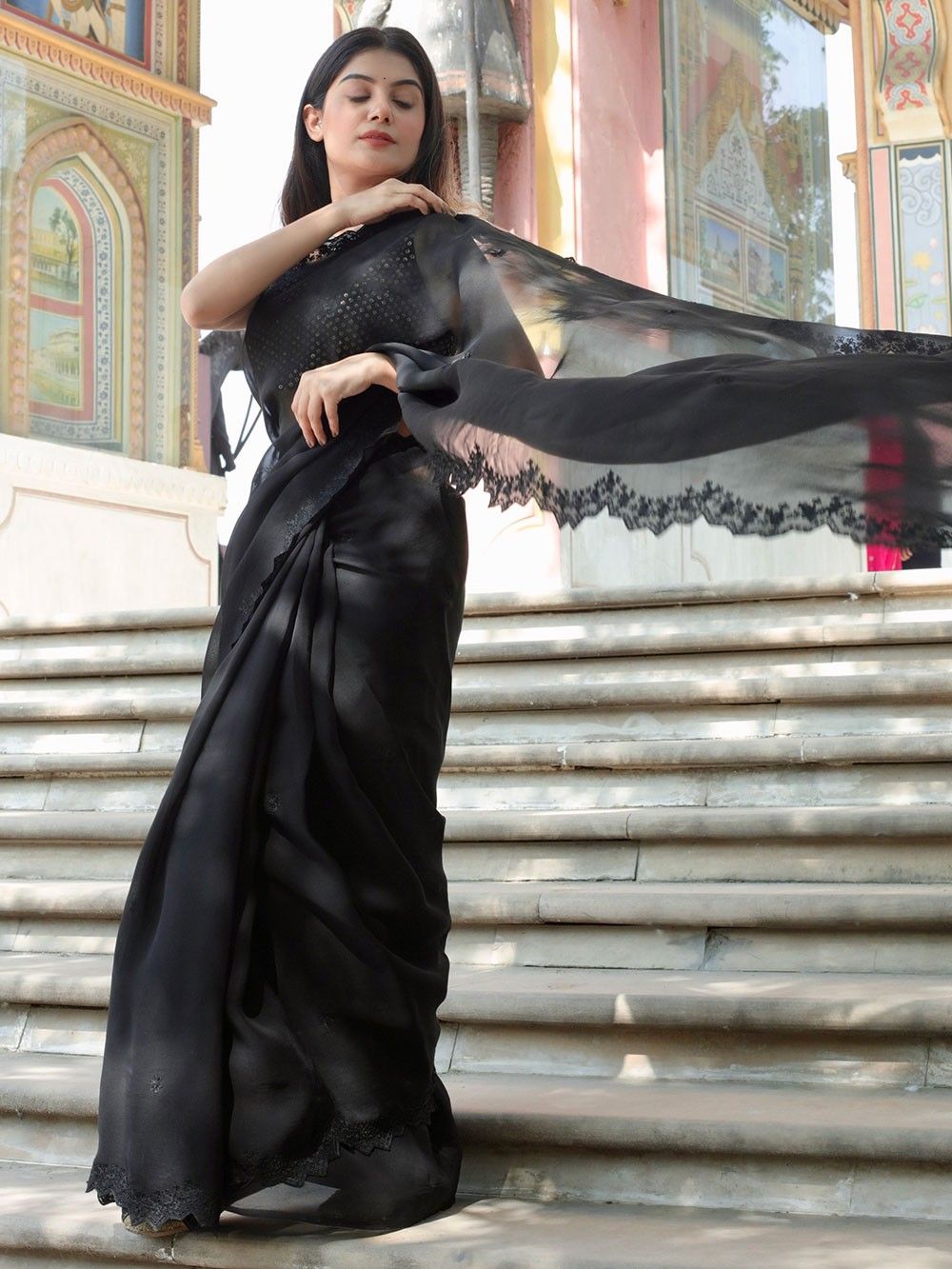Silk sarees are the epitome of grace, elegance, and timeless beauty. Adorning women for centuries, these exquisite garments hold a significant place in Indian culture and fashion. The rich texture, intricate designs, and luxurious feel of silk make it a coveted choice for special occasions, weddings, and festivities. But we understand your concern, a silk saree can cause some damage to your wallet but with Loom’s Flash Sale you don’t need to worry! You can grab your fav silk saree with a flat 35% – 70% off. So consider this blog as a sign to shop now but before that let’s delve into the fascinating world of silk sarees, exploring their origins, craftsmanship, and enduring appeal.
Origins and Diversity:

Silk, one of the oldest and most luxurious fabrics known to mankind, has been woven into sarees for centuries. India, renowned for its silk production, boasts a diverse range of silk sarees that vary in weaving techniques, designs, and regional influences. Each state has its own distinctive silk saree, showcasing the unique craftsmanship and heritage of the region.
Banarasi silk sarees from Varanasi, Uttar Pradesh, are revered for their opulence and intricate brocade work. These sarees often feature motifs inspired by Mughal art and mythology. The shimmering gold and silver threads used in their weaving create a regal effect, making them a favorite among brides.
Kanjeevaram silk sarees, hailing from Kanchipuram in Tamil Nadu, are known for their lustrous silk and vibrant colors. These sarees are distinguished by their wide borders and elaborate temple-inspired designs. Kanjeevaram sarees are crafted using pure mulberry silk and are cherished for their durability and rich texture.
Craftsmanship and Weaving Techniques:

The art of weaving silk sarees is a labor-intensive process that requires skill, precision, and attention to detail. Weavers meticulously handcraft each saree, often using traditional techniques passed down through generations. From preparing the silk yarn to dyeing, designing, and weaving, the process involves several stages.
The weaving technique used for silk sarees depends on the region and the desired outcome. Some popular weaving styles include Jamdani, Bandhani, Patola, and Baluchari, each with its own distinct characteristics and motifs. These techniques involve the use of supplementary threads, tie-and-dye methods, and jacquard looms to create intricate patterns and designs.
Eternal Appeal:

Silk sarees continue to captivate women across generations with their timeless appeal. Their versatility makes them suitable for various occasions, from grand celebrations to formal events. Silk sarees effortlessly blend tradition with contemporary fashion trends, making them a preferred choice for fashion-conscious individuals.
Apart from their aesthetic appeal, silk sarees hold immense cultural and sentimental value. They are often passed down through families as heirlooms, carrying the memories and stories of generations. The artistry and craftsmanship invested in each saree make it a work of art that reflects the rich heritage and traditions of India.
Embracing Silk Sarees:

Wearing a silk saree is not merely draping oneself in a piece of fabric; it is an expression of grace, femininity, and cultural pride. When adorning a silk saree, a woman embodies the essence of tradition and elegance. It is a celebration of craftsmanship, heritage, and the timeless beauty of silk.
What are you waiting for? The sale of your dreams is here, so make the move and shop for an elegant silk saree now to slay the next family function. The Loom’s Flash Sale is a chance for you to grab what you seeking!
In conclusion, silk sarees are an embodiment of beauty, artistry, and tradition. From their diverse origins to intricate weaving techniques, silk sarees hold a special place in the hearts of millions. Whether worn for weddings, festivals, or special occasions, these exquisite garments make you feel and look like a dive!
